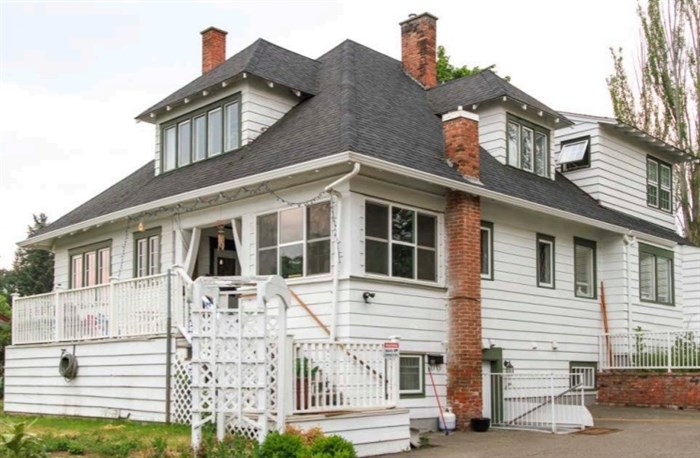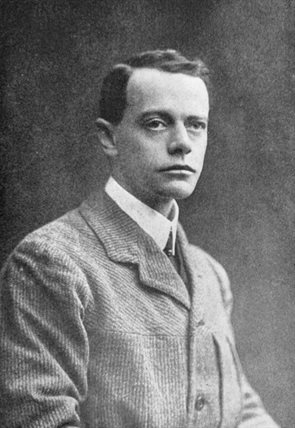The history behind the last ranch house in Kamloops

A big, beautiful colonial-style house in Kamloops has a long and fascinating history of ownership by many prominent families over the decades.
Built in 1908, the Balquhidder house is recognized as the oldest house in the Lower Sahali neighbourhood in Kamloops.
The house is a familiar sight for long-time residents with its colonial bungalow design that includes one and one-half stories, a recessed veranda, masonry chimney stacks and other design elements characteristic of the turn of the century.
From farmers to medical practitioners to lawyers, the house has been home to a variety of different people in its colourful past, according to the City of Kamloops.
The original owner of the relic was Alfred W. Johnson, the son of English Quaker missionaries. Born in Madagascar, Johnson was sent to England for education as a teenager and immigrated to Kamloops in 1893 where he became a surveyor on a variety of projects that led him around the province.
He later met Mary L.K. MacKenzie, a Scottish woman born in India, and the two got married in Scotland in 1907.
The couple returned to BC where Johnson got a homestead on 224 acres outside Kamloops city limits and built a house in 1908, naming it Balquhidder, which could have been a nod to his wife’s Gaelic roots. The builder, architect and designer of the house are unknown.
For the first few years, Johnson built structures including a garage, barn, water reservoir and pump house. He raised livestock and had a fruit orchard. He lent some land to the Kamloops Golf Club who built a course in 1914 where the Hillside Cemetery is now.
Johnson did some time in the local military, enlisting with the Lord Strathcona’s Horse regiment in Kamloops in 1900, and serving in the Second Boer War. He served in the First World War and he died of injuries from a gas attack in 1918 and while his wife Mary MacKenzie kept ownership of the property, she and their two kids moved to Oak Bay.
The house was purchased by another couple in 1937.
Archibald G. and Grace H. Naismith came to Kamloops in 1925 when he was appointed to work as a pathologist at the Kamloops hospital, and they stayed for a decade.
READ MORE: Unvaccinated doctor goes to court to get Kamloops hospital job back
After the Second World War the surrounding land was developed.
Balquhidder was incorporated into the City of Kamloops in a boundary extension in 1959.
The land was then purchased by Neil. R. McGill, a local liquor vendor who subdivided the property in the early 1950s who lived there with his wife for two decades.
The next owners were the Balfs in 1956. Charles was a physician and surgeon, and his wife Mary was a physiotherapist at a private clinic. She later became the first curator and archivist at the Kamloops Museum. Owners that came later were professionals, including lawyers and accountants.
Some heritage character elements of the house are its rectangular plan, its hip roof with dormers and its wooden frame with a concrete foundation. The exterior cladding, window frames and trim are all made of wood. The colonial bungalow features include overhanging open eaves with exposed rafter tails, red brick chimney stacks with concrete crowns and a large porch off the front.
READ MORE: Kamloops council agrees to spend $7M on new arts centre but not without infighting
During a city council meeting, Feb. 6, the current owner’s requested that Balquhidder be added to the Community Heritage Register but council said no. Heritage registers are used in communities to promote heritage tourism and formally identify heritage resources.
While the majority of council voted against registering the house, councillor Nancy Bepple was very much in favour.
“We have a small fraction of heritage buildings that we are recognizing,” Bepple said at the meeting. “This is one of the last ranch houses standing within the city limits of Kamloops. When I was a kid I grew up near this house, they actually still had the fencing for the ranch behind my house. Once it’s gone, it’s gone, and it’s a huge lot.”
While the city won't be recognizing the house as a heritage property, the owners intend to pursue a heritage designation.
A heritage designation gives a property permanent legal protection and affects the property value. The city could be required to financially compensate any loss of property value due to the designation and provide an alteration permit before any changes on the property are made.
To contact a reporter for this story, email Shannon Ainslie or call 250-819-6089 or email the editor. You can also submit photos, videos or news tips to the newsroom and be entered to win a monthly prize draw.
We welcome your comments and opinions on our stories but play nice. We won't censor or delete comments unless they contain off-topic statements or links, unnecessary vulgarity, false facts, spam or obviously fake profiles. If you have any concerns about what you see in comments, email the editor in the link above. SUBSCRIBE to our awesome newsletter here.





